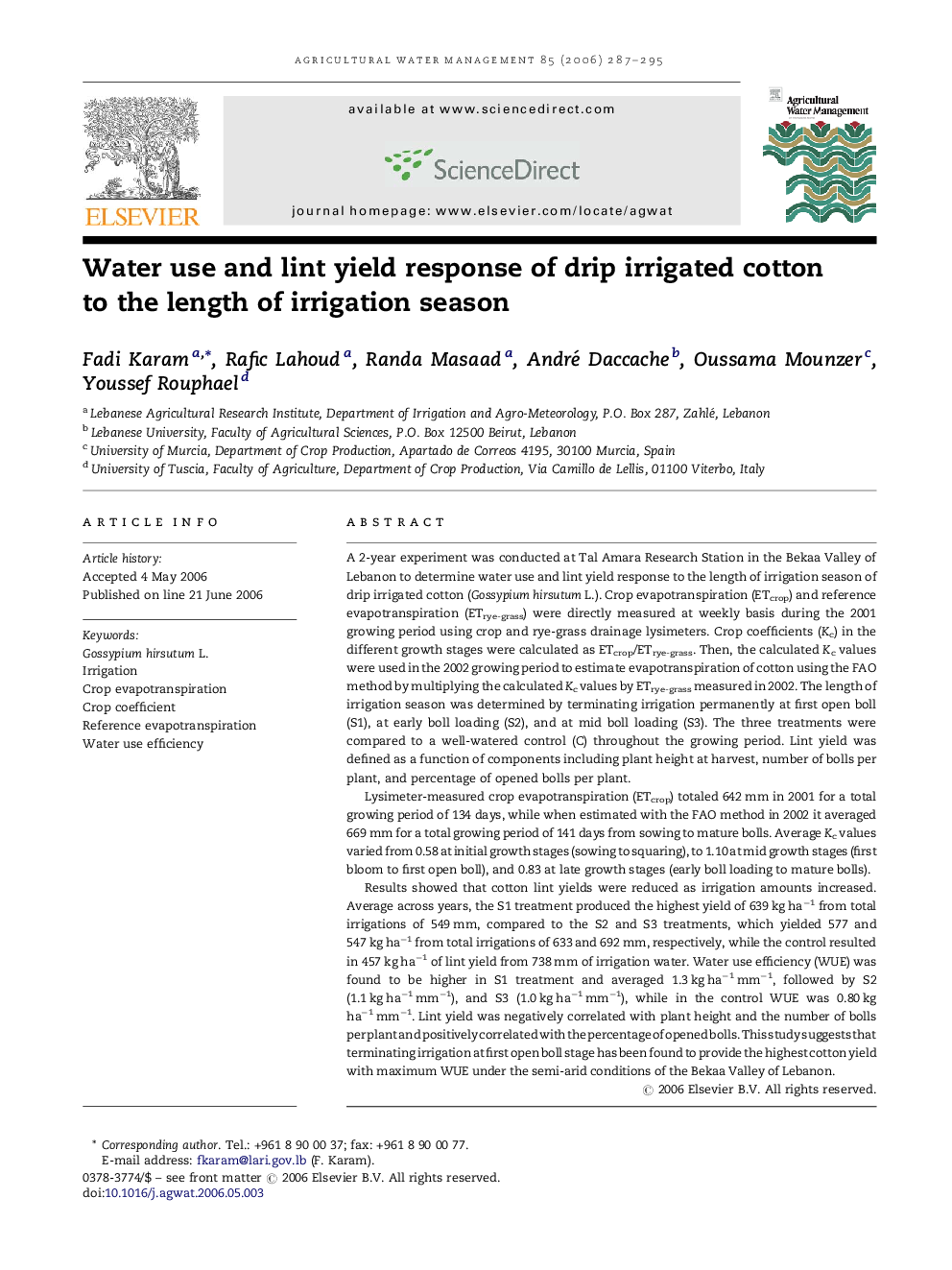| کد مقاله | کد نشریه | سال انتشار | مقاله انگلیسی | نسخه تمام متن |
|---|---|---|---|---|
| 4480530 | 1316500 | 2006 | 9 صفحه PDF | دانلود رایگان |

A 2-year experiment was conducted at Tal Amara Research Station in the Bekaa Valley of Lebanon to determine water use and lint yield response to the length of irrigation season of drip irrigated cotton (Gossypium hirsutum L.). Crop evapotranspiration (ETcrop) and reference evapotranspiration (ETrye-grass) were directly measured at weekly basis during the 2001 growing period using crop and rye-grass drainage lysimeters. Crop coefficients (Kc) in the different growth stages were calculated as ETcrop/ETrye-grass. Then, the calculated Kc values were used in the 2002 growing period to estimate evapotranspiration of cotton using the FAO method by multiplying the calculated Kc values by ETrye-grass measured in 2002. The length of irrigation season was determined by terminating irrigation permanently at first open boll (S1), at early boll loading (S2), and at mid boll loading (S3). The three treatments were compared to a well-watered control (C) throughout the growing period. Lint yield was defined as a function of components including plant height at harvest, number of bolls per plant, and percentage of opened bolls per plant.Lysimeter-measured crop evapotranspiration (ETcrop) totaled 642 mm in 2001 for a total growing period of 134 days, while when estimated with the FAO method in 2002 it averaged 669 mm for a total growing period of 141 days from sowing to mature bolls. Average Kc values varied from 0.58 at initial growth stages (sowing to squaring), to 1.10 at mid growth stages (first bloom to first open boll), and 0.83 at late growth stages (early boll loading to mature bolls).Results showed that cotton lint yields were reduced as irrigation amounts increased. Average across years, the S1 treatment produced the highest yield of 639 kg ha−1 from total irrigations of 549 mm, compared to the S2 and S3 treatments, which yielded 577 and 547 kg ha−1 from total irrigations of 633 and 692 mm, respectively, while the control resulted in 457 kg ha−1 of lint yield from 738 mm of irrigation water. Water use efficiency (WUE) was found to be higher in S1 treatment and averaged 1.3 kg ha−1 mm−1, followed by S2 (1.1 kg ha−1 mm−1), and S3 (1.0 kg ha−1 mm−1), while in the control WUE was 0.80 kg ha−1 mm−1. Lint yield was negatively correlated with plant height and the number of bolls per plant and positively correlated with the percentage of opened bolls. This study suggests that terminating irrigation at first open boll stage has been found to provide the highest cotton yield with maximum WUE under the semi-arid conditions of the Bekaa Valley of Lebanon.
Journal: Agricultural Water Management - Volume 85, Issue 3, 16 October 2006, Pages 287–295